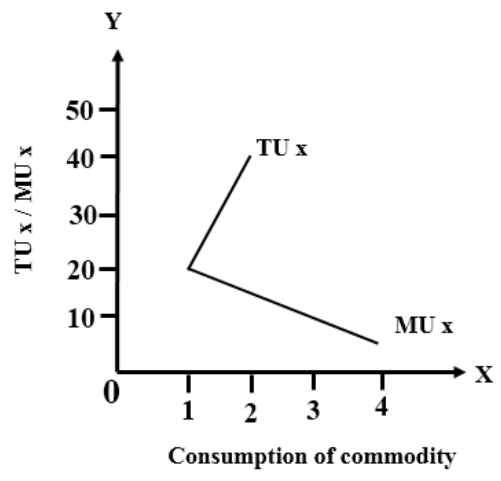Consumer equilibrium refers to a situation when the consumer’s satisfaction from a commodity equals the amount that they are paying to purchase the commodity. Price can be easily measured, however, satisfaction, being a qualitative aspect, cannot be measured by a specific scale. So we need a definite measure to calculate whether the consumer’s satisfaction is equal to the price they are paying or not. The measure we use for this calculation is called Utility. Utility is the want satisfying power of a commodity and we measure it with the help of Utils.
Marginal utility
It refers to the additional utility derived from the consumption of one more unit of the commodity. For example, if the satisfaction from consumption of first unit of commodity is 10 utils and that from the second time consumption is 18 utils, so, the marginal utility of second unit will be 18-10 = 8
MU = TU n – TU n-1
Total Utility
Total utility: It is the sum total utility derived from consumption of all the units of a commodity. For example, the first time consumption of a commodity gives you 10 utils worth satisfaction and second time consumption of the same commodity gives 8 utils worth satisfaction. Thus, the total utility will be 10+8 = 18 utils
| Consumption of Ice cream | Total utility | Marginal utility of Ice cream |
| 1 | 20 | 20 – 0 = 20 |
| 2 | 28 | 28 – 20 = 8 |
| 3 | 35 | 35 – 28 = 7 |
| 4 | 40 | 40 – 35 = 5 |
Total utility curve
